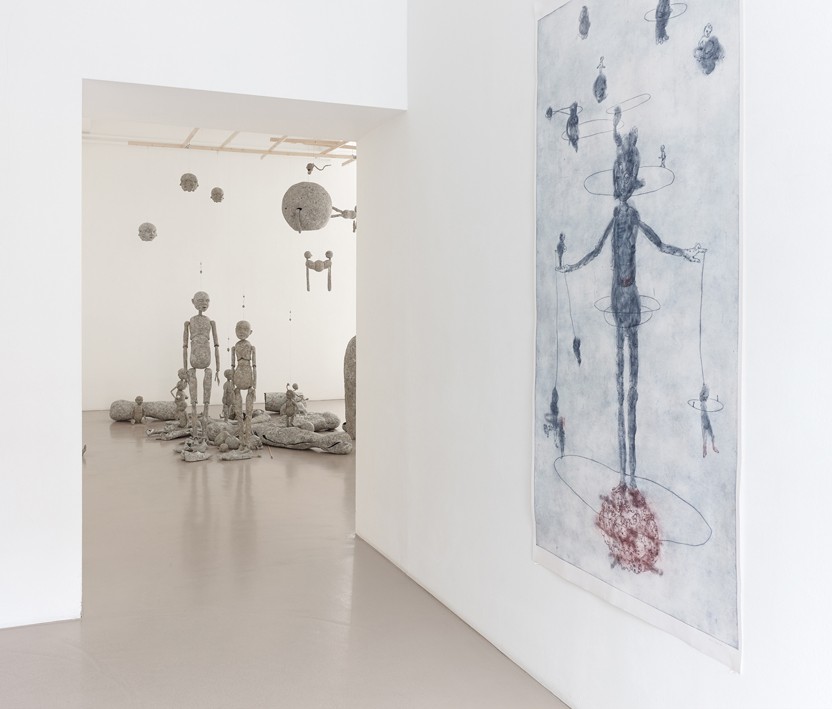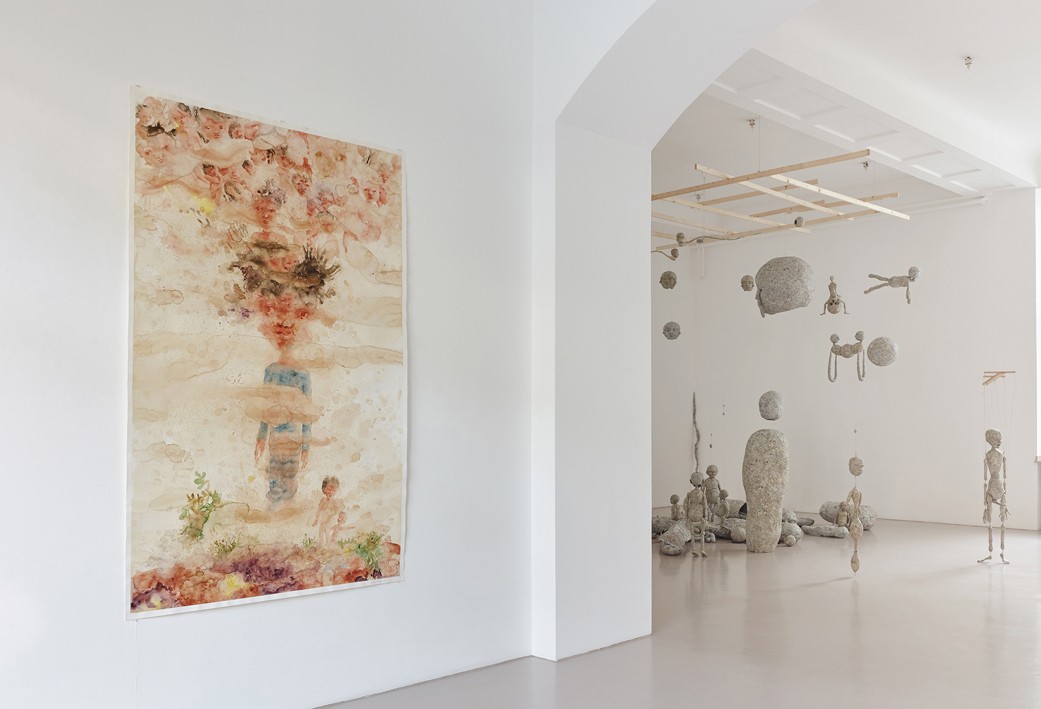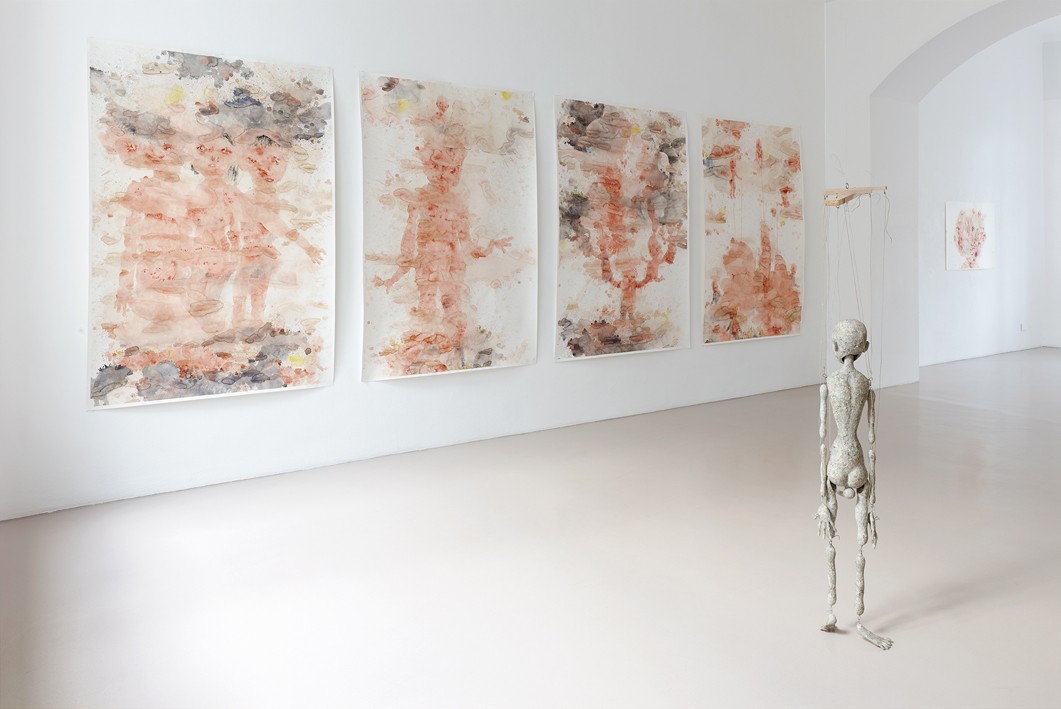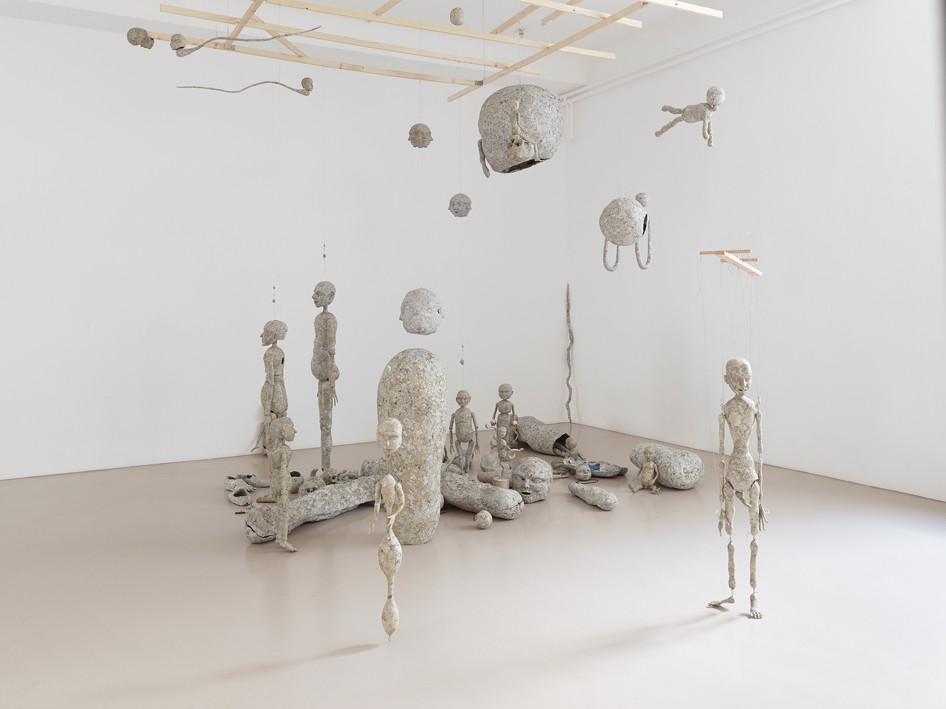Michael Kalmbach. MEIN VENUS
13 Jan - 04 Mar 2017
Thomas Rehbein Gallery is pleased to present new work by Michael Kalmbach, featuring not only his characteristic watercolours but also papier-mâché sculptures, etchings and collages.
Art theoreticians as early as the Renaissance placed emphasis on the formative power of the fleck, blot or smudge. They recognized the potential that lies in the formlessness of indeterminate phenomena and encouraged budding artists to closely observe walls that had flecks on their surface, or consisted of a variety of different types of stone. By virtue of this perceptive mode of seeing images were discovered and constructed. Flecks were thus viewed as a source of inspiration, an impulse for the imagination, from which a composition could grow.
The starting point for the watercolour works of Michael Kalmbach, too, is an accumulation of undefined, extensive flecks. Kalmbach randomly drips and sprays coloured water onto damp sheets of paper, after which the excess liquid collects in puddles; then during the drying process deposits of pigments congeal to form coloured ‘islands’ of differing intensity. This irregular, flesh-coloured field of overlaid flecks creates the amorphous substrate from which Michael Kalmbach’s visual worlds emerge. The abstract agglomerations and irregular deposits of this fecund primordial soup with which Kalmbach covers the paper, and which generates all potential variants of form, give rise to indiscriminate shapes and designs. Kalmbach uses his brush to organise concentrations of tints and tones bearing organic semblance at chosen points. The unbridled full-sheet pigmentation is given structure, ordering impulses of physiognomic features and body parts reveal faces and figures. Scenes with a fairy-tale quality take shape, populated by the figures of dreamy, enraptured boys. Their bodies are often only suggested, appearing on the surface in a wraithlike manner due to the flowing contours and then quickly blurring again, merging with another curve. Limbs emerge from swirling clouds and then dissolve again (Puppenspieler/ Puppet player). It seems that a constant process of becoming and passing is being depicted here in all its dynamism.
In this cosmology, chaos or the formless origin of life has not been finally overcome. Instead it repeatedly intermingles with the structured framework of being in displays of dissolution and ambiguity. Kalmbach has taken a small chamber, separated from the rest of the gallery space, and furnished it like a cave. Lined with collages of newspaper, this houses the arsenal of anatomic and amorphous basic elements from which the artist draws his inspiration. This germ cell seems to symbolize the primeval state of symbiotic merging, the creative potential in which form- and identity-endowing boundaries have not yet taken shape.
Art theoreticians as early as the Renaissance placed emphasis on the formative power of the fleck, blot or smudge. They recognized the potential that lies in the formlessness of indeterminate phenomena and encouraged budding artists to closely observe walls that had flecks on their surface, or consisted of a variety of different types of stone. By virtue of this perceptive mode of seeing images were discovered and constructed. Flecks were thus viewed as a source of inspiration, an impulse for the imagination, from which a composition could grow.
The starting point for the watercolour works of Michael Kalmbach, too, is an accumulation of undefined, extensive flecks. Kalmbach randomly drips and sprays coloured water onto damp sheets of paper, after which the excess liquid collects in puddles; then during the drying process deposits of pigments congeal to form coloured ‘islands’ of differing intensity. This irregular, flesh-coloured field of overlaid flecks creates the amorphous substrate from which Michael Kalmbach’s visual worlds emerge. The abstract agglomerations and irregular deposits of this fecund primordial soup with which Kalmbach covers the paper, and which generates all potential variants of form, give rise to indiscriminate shapes and designs. Kalmbach uses his brush to organise concentrations of tints and tones bearing organic semblance at chosen points. The unbridled full-sheet pigmentation is given structure, ordering impulses of physiognomic features and body parts reveal faces and figures. Scenes with a fairy-tale quality take shape, populated by the figures of dreamy, enraptured boys. Their bodies are often only suggested, appearing on the surface in a wraithlike manner due to the flowing contours and then quickly blurring again, merging with another curve. Limbs emerge from swirling clouds and then dissolve again (Puppenspieler/ Puppet player). It seems that a constant process of becoming and passing is being depicted here in all its dynamism.
In this cosmology, chaos or the formless origin of life has not been finally overcome. Instead it repeatedly intermingles with the structured framework of being in displays of dissolution and ambiguity. Kalmbach has taken a small chamber, separated from the rest of the gallery space, and furnished it like a cave. Lined with collages of newspaper, this houses the arsenal of anatomic and amorphous basic elements from which the artist draws his inspiration. This germ cell seems to symbolize the primeval state of symbiotic merging, the creative potential in which form- and identity-endowing boundaries have not yet taken shape.




